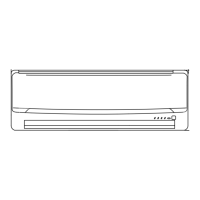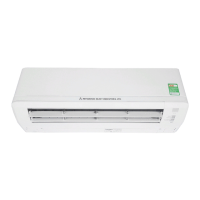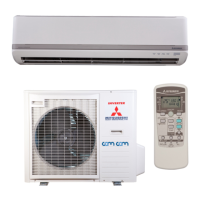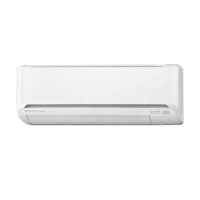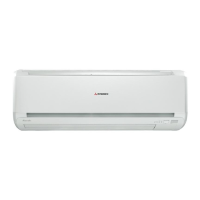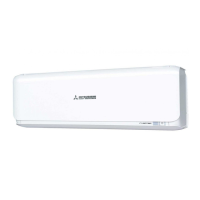
Do you have a question about the Mitsubishi SRK Series and is the answer not in the manual?
| Type | Split System |
|---|---|
| Cooling Technology | Inverter |
| Power Supply | 220-240V, 50Hz |
| Refrigerant | R32 |
| Cooling Capacity | Varies by model |
| Heating Capacity | Varies by model |
| Energy Efficiency Ratio (EER) | Varies by model |
| Coefficient of Performance (COP) | Varies by model |
| Noise Level (Indoor Unit) | Varies by model |
| Noise Level (Outdoor Unit) | Varies by model |
| Indoor Unit Dimensions (W x H x D) | Varies by model |
| Outdoor Unit Dimensions (W x H x D) | Varies by model |
| Indoor Unit Weight | Varies by model |
| Outdoor Unit Weight | Varies by model |
Introduction to the product line covered in the manual.
Comprehensive data on unit features, performance, and components.
Visual representations and measurements for indoor unit installation.
Visual representations and measurements for outdoor unit installation.
Schematics detailing electrical connections for the indoor unit.
Schematics detailing electrical connections for the outdoor unit.
Measured sound power levels across frequencies for cooling and heating.
Measured sound pressure levels across frequencies for various modes.
Visual representation of refrigerant flow for cooling and heating cycles.
Defines acceptable indoor/outdoor temperatures, piping lengths, and voltage.
Factors to adjust cooling/heating capacity based on piping and temperature.
Tables showing cooling and heating capacities based on operating conditions.
Procedures and precautions for installing the indoor unit.
Procedures and precautions for installing the outdoor unit.
Critical safety measures for handling flammable refrigerants.
Explanation of all buttons and features on the wireless remote control.
Details on unit ON/OFF, auto restart, and installation settings.
Explains 3D Auto, timers, silent operation, and air flow adjustments.
Outlines DRY mode and automatic operation logic based on conditions.
Important warnings and initial checks before troubleshooting.
Step-by-step guide for diagnosing and fixing non-operation issues.
Guidance for diagnosing issues when the unit is running but malfunctioning.
Procedures for accessing and interpreting self-diagnosis and service modes.
Information on optional accessories and their function.
Explanation of how to interpret the product model number.




